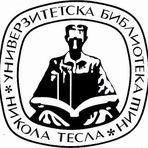Title
Biomarkeri inflamacije kao prediktori pleuropulmonalnih komplikacija nakon preloma rebara u tupoj traumi grudnog koša
Creator
Pavlović, Milorad 1976-
CONOR:
95548169
Copyright date
2023
Object Links
Language
Serbian
Cobiss-ID
Theses Type
Doktorska disertacija
description
Datum odbrane: 05.06.2024.
Other responsibilities
Academic Expertise
Medicinske nauke
University
Univerzitet u Nišu
Faculty
Medicinski fakultet
Group
Katedra za hirurgiju
Alternative title
Inflammatory biomarkers as predictors of pleuropulmonary complications after rib fracture in blunt trauma
Publisher
[M. T. Pavlović]
Format
163 listova
description
Biografija autora: list 163. Bibliografija: listovi 129-162.
description
Surgery
Abstract ()
Introduction: Chest trauma is one of the leading causes of morbidity and mortality in all age groups. Blunt chest trauma is more common than penetrating injury and accounts for more than 90% of chest injuries. Rib fractures are common in blunt chest trauma. Some patients with rib fractures develop pleuropulmonary complications - pneumothorax, hemato-thorax, hemato-pneumothorax, pleural effusion, pneumonia, empyema, lung atelectasis and ARDS, which largely affects the outcome of the treatment.
Timely recognition of which patients with rib fractures will develop pleuropulmonary complications is important for prevention and adequate treatment.
There is little data available in the literature to predict the occurrence of complications after blunt chest trauma.
Immediately after injury, the body's immune system is activated with the release of inflammatory mediators, which are also biomarkers of inflammation. The discovery of biomarkers of inflammation whose changes in serum levels indicate the subsequent occurrence of complications potentially enables faster diagnostics, prevention of the same occurrence and adequate therapy of these patients.
Objective: The objective of the research is to determine the statistically significant association of inflammation biomarkers (neutrophil-to-lymphocyte ratio, leukocyte count, stress-induced hyperglycemia, fibrinogen, D-dimer, CRP, procalcitonin, uric acid, interleukin-6, protein S100 and sHSP70) with pleuropulmonary complications in rib fractures after blunt chest trauma, which will enable the prevention of complications and their timely treatment.
Patients, material and methods: In this doctoral dissertation the prospective study included 90 patients with rib fractures caused by blunt chest trauma. The patients were divided into two groups: the test group (45 patients with rib fracture and present pleuropulmonary complications) and the control group (45 patients with rib fracture without pleuropulmonary complications). Blood sampling was performed on admission, on the second, third and fifth day after the injury, and complications were monitored until the seventh day after the injury.
In statistical data processing, the data are displayed in the form of the arithmetic means and standard deviations, or in the form of the absolute and relative numbers. The normality of data distribution was tested with the Kolmogorov-Smirnov test. Comparison of continuous variables was performed by T-test and Mann-Whitney test. The comparison of the tested parameters in repeated measurements was tested using ANOVA for repeated measurements, that is, a two-factor analysis of variance was performed with one repeated factor (time - four measurements in the period of the first day, second day, third day and fifth day) and a non-repeated factor - two groups with and without complications.
Results: The results of this study indicate that in patients with pleuropulmonary complications after rib fractures in blunt chest trauma, fibrinogen has the highest values on the second and third day after the injury and as such can be used as a predictor of the occurrence of pleuropulmonary complications. C-reactive protein is significant in the prediction of pleuropulmonary complications on the second and third day after rib fracture in blunt chest trauma. C-reactive protein values within normal limits largely exclude the existence of pleuropulmonary complications after rib fractures in blunt chest trauma. Interleukin-6 can be used as a biomarker of the occurrence of pleuropulmonary complications on the second day after a rib fracture in blunt chest trauma and can be used in the stratification of patients for therapeutic intervention due to its good discriminative ability in assessing the occurrence of the pleuropulmonary complications on the second day after a rib fracture.
It was determined that there is no statistical significance between the value of the ratio of neutrophils and lymphocytes, the number of leukocytes, stress-induced hyperglycemia, D-dimer, procalcitonin, uric acid, protein S100B and sHeat shock protein 70 and the occurrence of the pleuropulmonary complications after rib fractures in blunt chest trauma.
Conclusion: In this dissertation it was concluded that the values of serum levels of fibrinogen, C-reactive protein and Interleukin-6 can be used as biomarkers of the occurrence of the pleuropulmonary complications after rib fractures in blunt chest trauma.
The ratio of neutrophils to lymphocytes, the number of leukocytes, stress-induced hyperglycemia, D-dimer, procalcitonin, uric acid, protein S100B and sHeat shock protein 70 cannot be used as biomarkers of the occurrence of pleuropulmonary complications after rib fractures in blunt chest trauma.
Simultaneous monitoring of fibrinogen, interleukin-6 and C-reactive protein can significantly contribute to the prediction of the pleuropulmonary complications after rib fractures in blunt chest trauma.
Authors Key words
tupa trauma grudnog koša, prelom rebara, pleuropulmonalne komplikacije, biomarkeri inflamacije
Authors Key words
blunt chest trauma, rib fracture, pleuropulmonary complications, inflammatory biomarkers
Classification
616.712.1-001.5:616.24-06(043.3)
Subject
B600
Type
Tekst
Abstract ()
Introduction: Chest trauma is one of the leading causes of morbidity and mortality in all age groups. Blunt chest trauma is more common than penetrating injury and accounts for more than 90% of chest injuries. Rib fractures are common in blunt chest trauma. Some patients with rib fractures develop pleuropulmonary complications - pneumothorax, hemato-thorax, hemato-pneumothorax, pleural effusion, pneumonia, empyema, lung atelectasis and ARDS, which largely affects the outcome of the treatment.
Timely recognition of which patients with rib fractures will develop pleuropulmonary complications is important for prevention and adequate treatment.
There is little data available in the literature to predict the occurrence of complications after blunt chest trauma.
Immediately after injury, the body's immune system is activated with the release of inflammatory mediators, which are also biomarkers of inflammation. The discovery of biomarkers of inflammation whose changes in serum levels indicate the subsequent occurrence of complications potentially enables faster diagnostics, prevention of the same occurrence and adequate therapy of these patients.
Objective: The objective of the research is to determine the statistically significant association of inflammation biomarkers (neutrophil-to-lymphocyte ratio, leukocyte count, stress-induced hyperglycemia, fibrinogen, D-dimer, CRP, procalcitonin, uric acid, interleukin-6, protein S100 and sHSP70) with pleuropulmonary complications in rib fractures after blunt chest trauma, which will enable the prevention of complications and their timely treatment.
Patients, material and methods: In this doctoral dissertation the prospective study included 90 patients with rib fractures caused by blunt chest trauma. The patients were divided into two groups: the test group (45 patients with rib fracture and present pleuropulmonary complications) and the control group (45 patients with rib fracture without pleuropulmonary complications). Blood sampling was performed on admission, on the second, third and fifth day after the injury, and complications were monitored until the seventh day after the injury.
In statistical data processing, the data are displayed in the form of the arithmetic means and standard deviations, or in the form of the absolute and relative numbers. The normality of data distribution was tested with the Kolmogorov-Smirnov test. Comparison of continuous variables was performed by T-test and Mann-Whitney test. The comparison of the tested parameters in repeated measurements was tested using ANOVA for repeated measurements, that is, a two-factor analysis of variance was performed with one repeated factor (time - four measurements in the period of the first day, second day, third day and fifth day) and a non-repeated factor - two groups with and without complications.
Results: The results of this study indicate that in patients with pleuropulmonary complications after rib fractures in blunt chest trauma, fibrinogen has the highest values on the second and third day after the injury and as such can be used as a predictor of the occurrence of pleuropulmonary complications. C-reactive protein is significant in the prediction of pleuropulmonary complications on the second and third day after rib fracture in blunt chest trauma. C-reactive protein values within normal limits largely exclude the existence of pleuropulmonary complications after rib fractures in blunt chest trauma. Interleukin-6 can be used as a biomarker of the occurrence of pleuropulmonary complications on the second day after a rib fracture in blunt chest trauma and can be used in the stratification of patients for therapeutic intervention due to its good discriminative ability in assessing the occurrence of the pleuropulmonary complications on the second day after a rib fracture.
It was determined that there is no statistical significance between the value of the ratio of neutrophils and lymphocytes, the number of leukocytes, stress-induced hyperglycemia, D-dimer, procalcitonin, uric acid, protein S100B and sHeat shock protein 70 and the occurrence of the pleuropulmonary complications after rib fractures in blunt chest trauma.
Conclusion: In this dissertation it was concluded that the values of serum levels of fibrinogen, C-reactive protein and Interleukin-6 can be used as biomarkers of the occurrence of the pleuropulmonary complications after rib fractures in blunt chest trauma.
The ratio of neutrophils to lymphocytes, the number of leukocytes, stress-induced hyperglycemia, D-dimer, procalcitonin, uric acid, protein S100B and sHeat shock protein 70 cannot be used as biomarkers of the occurrence of pleuropulmonary complications after rib fractures in blunt chest trauma.
Simultaneous monitoring of fibrinogen, interleukin-6 and C-reactive protein can significantly contribute to the prediction of the pleuropulmonary complications after rib fractures in blunt chest trauma.
“Data exchange” service offers individual users metadata transfer in several different formats. Citation formats are offered for transfers in texts as for the transfer into internet pages. Citation formats include permanent links that guarantee access to cited sources. For use are commonly structured metadata schemes : Dublin Core xml and ETUB-MS xml, local adaptation of international ETD-MS scheme intended for use in academic documents.


